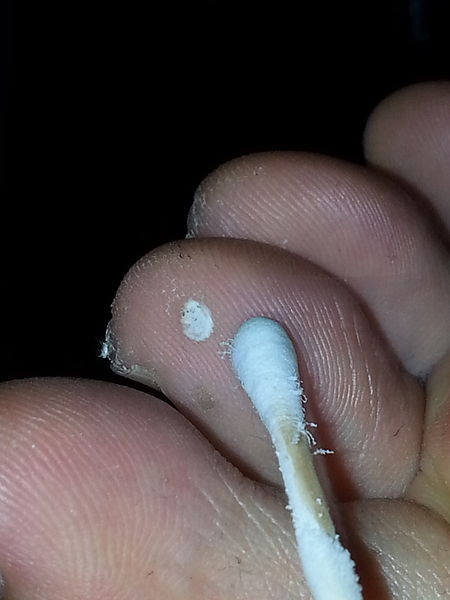Cryotherapy Treatments from U.S. Dermatology Partners
What Is Cryotherapy?
Cryotherapy, or “cryosurgery,” is a simple, non-invasive procedure in which liquid nitrogen is used to freeze and destroy growths on the surface of the skin. This is an effective treatment for precancerous skin lesions (actinic keratoses), as well as other skin conditions such as warts, skin tags and moles.
Applying liquid nitrogen to skin lesions allows dermatologists to target the damaged skin cells and destroy them at the cellular level. After freezing, the affected area may blister and scab over, and should heal within three to six weeks.
Our dermatology team uses cryosurgery to treat a wide range of conditions. It offers a number of advantages: Cryotherapy is a simple, affordable outpatient procedure, the discomfort level is minimal, and there is a low risk of infection.

In cryotherapy treatment, liquid nitrogen is applied to the skin to freeze and destroy the affected tissue.
Find This Service Near You
Who Is a Good Candidate for Cryotherapy?
Patients with harmless growths like warts, moles and skin tags are good candidates for cryotherapy. While it is not necessary to remove benign (non-cancerous) growths from your body, many people want to have them removed for reasons of aesthetics or comfort. For example, you could want a skin tag at your waistline removed if it rubs uncomfortably against your clothes. Similarly, you may want an obtrusive wart on your face removed in order to feel more confident in your appearance.
Cryotherapy is also a recommended treatment for actinic keratoses (precancerous lesions on the skin) and some forms of skin cancer. Any time that a lesion or tumor is exposed, and the extent of it can be easily determined, cryotherapy may be a good treatment option. Today, cryotherapy is even used on some internal cancers — such as liver cancer or prostate cancer — when the tumor is localized, large enough, and can be reached by the equipment during surgery.
How Is Cryotherapy Performed?

Liquid nitrogen can be applied with a cotton swab to freeze and remove warts, moles, skin lesions and some skin cancers. (Source)
Cryotherapy and cryosurgery typically use liquid nitrogen, stored at -321 °F (-196 °C), to “freeze” the affected tissue. However, in recent years doctors have begun using other liquid gases in cryotherapy treatments, including carbon dioxide, argon and proprietary mixtures from medical supply companies.
In dermatology settings, where the treatment area is usually external and relatively small, the liquid nitrogen is often applied with a cotton swab or piece of foam. The goal is to freeze the tissue quickly and then allow it to thaw slowly, which destroys the skin cells. Depending on the size of the treatment area, a second application may be needed. Additionally, your doctor may prepare the area by removing some of the tissue with a scalpel, or giving you a salicylic acid treatment to apply for several weeks beforehand.
In other settings the liquid nitrogen may be sprayed on or circulated through a tube called a cryoprobe. When a cryoprobe is used to treat internal tumors, the doctor will typically use ultrasound or MRI technology to guide them.
After external cryotherapy treatment, the frozen tissue may form a blister and then forms a scab. Fluid may ooze from the wound for several days, and this is normal. The body naturally heals itself underneath the scab as usual, resulting in skin free from the blemish or lesion in question.
While patients will experience some pain at the time of treatment, the pain is generally small enough that local anesthetic is not required. Patients may take analgesics like ibuprofen or acetaminophen after the treatment. Cryotherapy is a minimally invasive procedure, and is often recommended over more intensive surgical options due to the minimal amount of time, pain and money involved.
*Results may vary by individual
